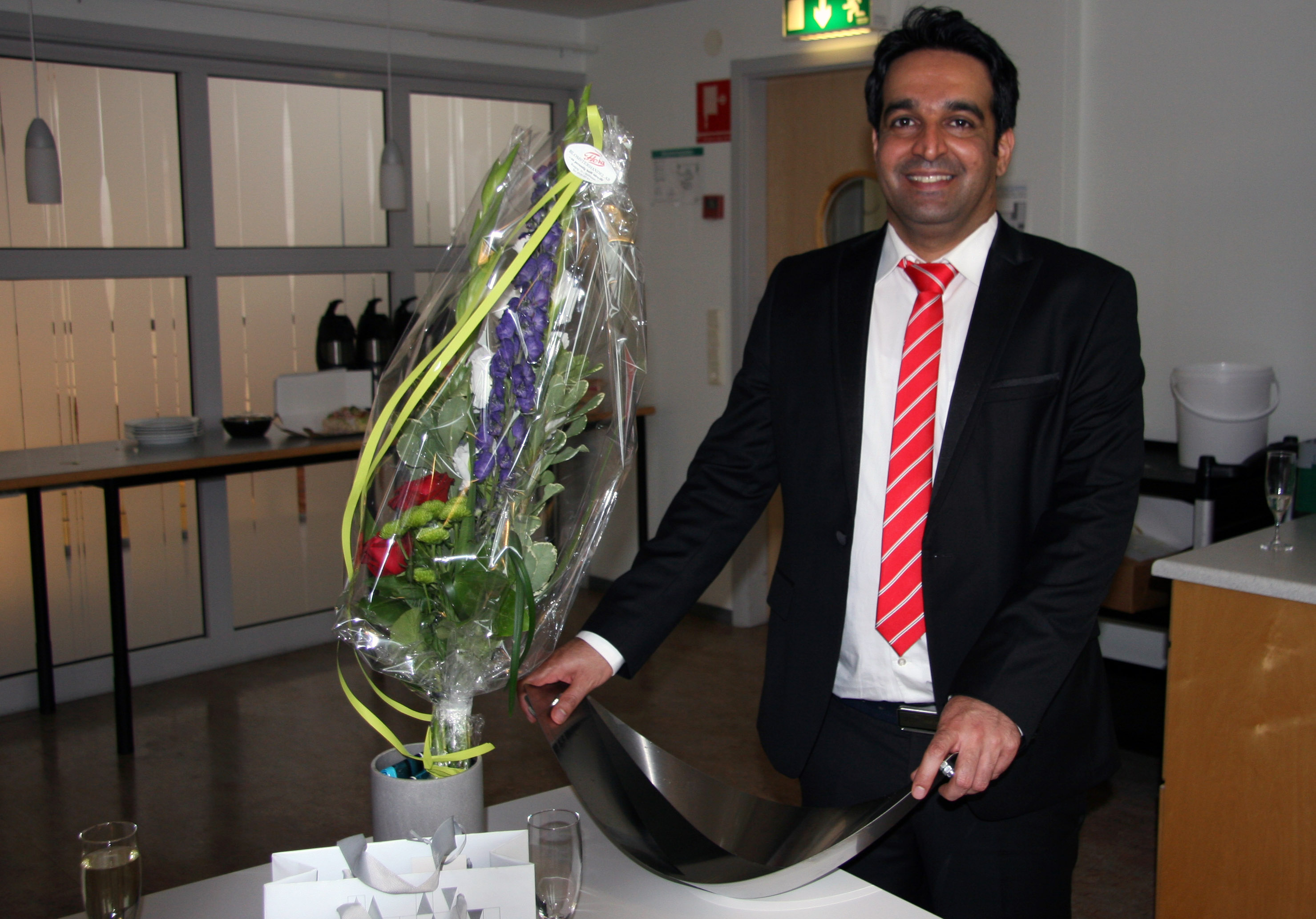New research for better fatigue strength in welds
25 Sep 2017
Today there are both demands and wishes to produce lighter structures within both vehicle and aerospace industry. One way to decrease the weight is to use high strength steels and joint hem by welding. Fatigue, mainly in welds, can, however, decrease the use of this method. A new thesis form University West shows how two different improvement methods can increase the fatigue life of components made from high strength steels.

Although welding has been used for about 100 years and welding technology has developed strongly, the weld is often a weak link in a construction. Especially this applies to structures exposed to rapidly varying loads, so-called fatigue. Examples of this are mainly vehicles of various kinds. Usually, for example, chassis parts consist of solid cast or forged pieces, which could be replaced by parts made with this new technology. Unfortunately, the possibility of using high strength steels often limits the fatigue strength of the welds.
- This is an important area for increasing knowledge. It is known that in up to 90 percent of cases when machines break apart, it is because of fatigue, so industry is working hard to find solutions to the problems, says Ebrahim Harati.
The project that Ebrahim Harati has been working on is about reducing the weight of the chassis to trucks. The project is made in collaboration with Volvo Trucks and the welding company Esab.
- There is a strong demand from the automotive industry for lighter materials to reduce fuel consumption. To develop more environmentally friendly vehicles, you need to use steel with even higher strength, which can be used in thinner dimensions and which therefore weigh less, says Ebrahim Harati.
Two different methods to improve fatigue resistance
An important aspect investigated by Ebrahim Harati and his colleagues is fatigue, especially in welds and how the manufacturing of welded structures prone to fatigue can be improved for the future. One possible solution is to use so-called improvement methods to increase fatigue strength. In this dissertation, the effects of two different improvement methods have been investigated: High Frequency Mechanical Impact (HFMI) treatment and the use of consumables with low phase transformation temperatures (Low Transformation Temperature, LTT).
- The main goals of the research have been to increase understanding of the factors that control fatigue strength and, secondly, to examine how the improvement methods (HFMI treatment and use of LTT consumables) affect the fatigue properties of high strength steel welds," says Ebrahim Harati.
The results showed, among other things, that the use of LTT consumables increased the fatigue strength of steel welds with different yield strengths (the highest tension a material can withstand without deformation). For a type of welds, so-called butt welds, the characteristic fatigue resistance of LTT welds was up to 46 percent higher than the corresponding welds made with conventional consumables. In another type of welds, known as fillet welds, a maximum improvement of 132 percent was achieved when using LTT welds. The increase in fatigue strength was due to the lower tensile stresses, or in some cases compressive stresses, which were produced near the weld toe of LTT welds.
Studies were also made showing that the increase in fatigue strength through HFMI treatment was due to the combined effect of the modification of the weld toe geometry, increase of surface hardness, and introduction of compressive residual stresses in the treated area. It was established that the residual stress had a relatively greater effect than the weld toe geometry on the fatigue strength of welds. A higher fatigue strength for HFMI treated conventional welds was also observed, compared to untreated welds with a similar weld toe radius but with different residual stresses.
Additional results
Another part of the research showed that the use of LTT consumables created compressive stresses in all directions at the weld toe near the surface. Furthermore, it was found that there are very steep stress gradients both across the weld direction and in the depth at the weld toe. Due to the difficulty in accurately measuring residual stress locally at the weld toe, residual stresses a few millimeters from the weld toe are related to the fatigue life, both in literature and in recommendations. However, this study shows that care must be taken when connecting these to fatigue life, especially for LTT welds, since the stresses in the base material a few millimeters away from the weld may differ greatly from the stresses locally at the weld toe.
Contact: Ebrahim Harati, 0520-22 33 41, ebrahim.harati@hv.se


